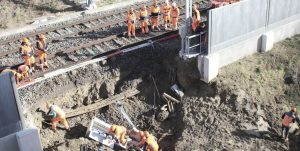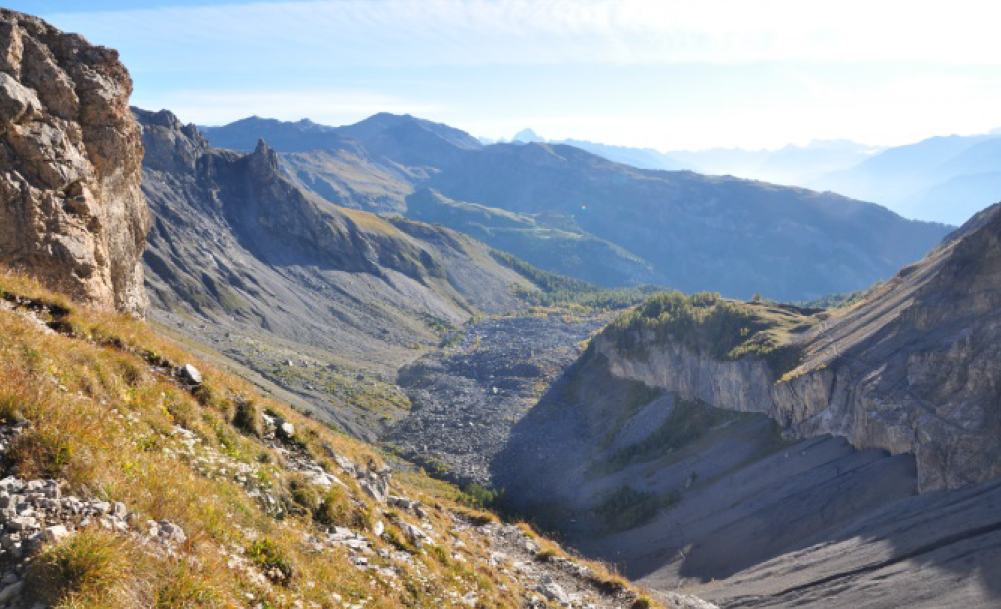Alexandre Loye
Director: Prof. Michel Jaboyedoff
Jury: Prof. Klaus Holliger, Prof. Michel Jaboyedoff, Dr. Marc-Henri Derron, Dr. Frédéric Liébault, Dr. Francesco Brardinoni, Prof. Oldrich Hungr
This thesis is a compilation of projects to study sediment processes recharging debris flow channels. These works, conducted during my stay at the University of Lausanne, focus in the geological and morphological implications of torrent catchments to characterize debris supply, a fundamental element to predict debris flows. Other aspects of sediment dynamics are considered, e.g. the coupling headwaters – torrent, as well as the development of a modeling software that simulates sediment transfer in torrent systems.
The sediment activity at Manival, an active torrent system of the northern French Alps, was investigated using terrestrial laser scanning and supplemented with geostructural investigations and a survey of sediment transferred in the main torrent. A full year of sediment flux could be observed, which coincided with two debris flows and several bedload transport events. This study revealed that both debris flows generated in the torrent and were preceded in time by recharge of material from the headwaters. Debris production occurred mostly during winter-early spring and was caused by large slope failures. Sediment transfers were more puzzling, occurring almost exclusively in early spring, subordinated to runoff conditions, and in autumn during long rainfall events. Intense rainstorms in summer did not affect debris storage that seems to rely on the stability of debris deposits.
The morpho-geological implication in debris supply was evaluated using DEM and field surveys. A slope angle-based classification of topography could characterize the mode of debris production and transfer. A slope stability analysis derived from the structures in rock mass could assess susceptibility to failure. The modeled rockfall source areas included more than 97% of the recorded events and the sediment budgets appeared to be correlated to the density of potential plane failure. This work showed that the analysis
of process-related terrain morphology and of susceptibility to slope failure document the sediment dynamics to quantitatively assess erosion zones leading to debris flow activity.
The development of erosional landforms was evaluated by analyzing their geometry with the orientations of potential rock slope failure and with the direction of the maximum joint frequency. Structure in rock mass, but in particular wedge failure and the dominant discontinuities, appear as a first-order control of erosional mechanisms affecting bedrockdominated catchments. They represent some weaknesses that are exploited primarily by mass wasting processes and erosion, promoting not only the initiation of rock couloirs and gullies, but also their propagation. Incorporating the geological control in geomorphic processes contributes to better understand the landscape evolution of active catchments.
A sediment flux algorithm was implemented in a sediment cascade model that discretizes the torrent catchment in channel reaches and individual process-response systems. Each conceptual element includes in a simple manner geomorphological and sediment flux information derived from GIS complemented with field mapping. This tool enables to simulate sediment transfers in channels, considering evolving debris supply and conveyance, and helps reducing uncertainty inherent to sediment budget prediction in torrent systems.
This thesis aims in a modest way to shine light on some aspects of sediment dynamics of torrent systems.


